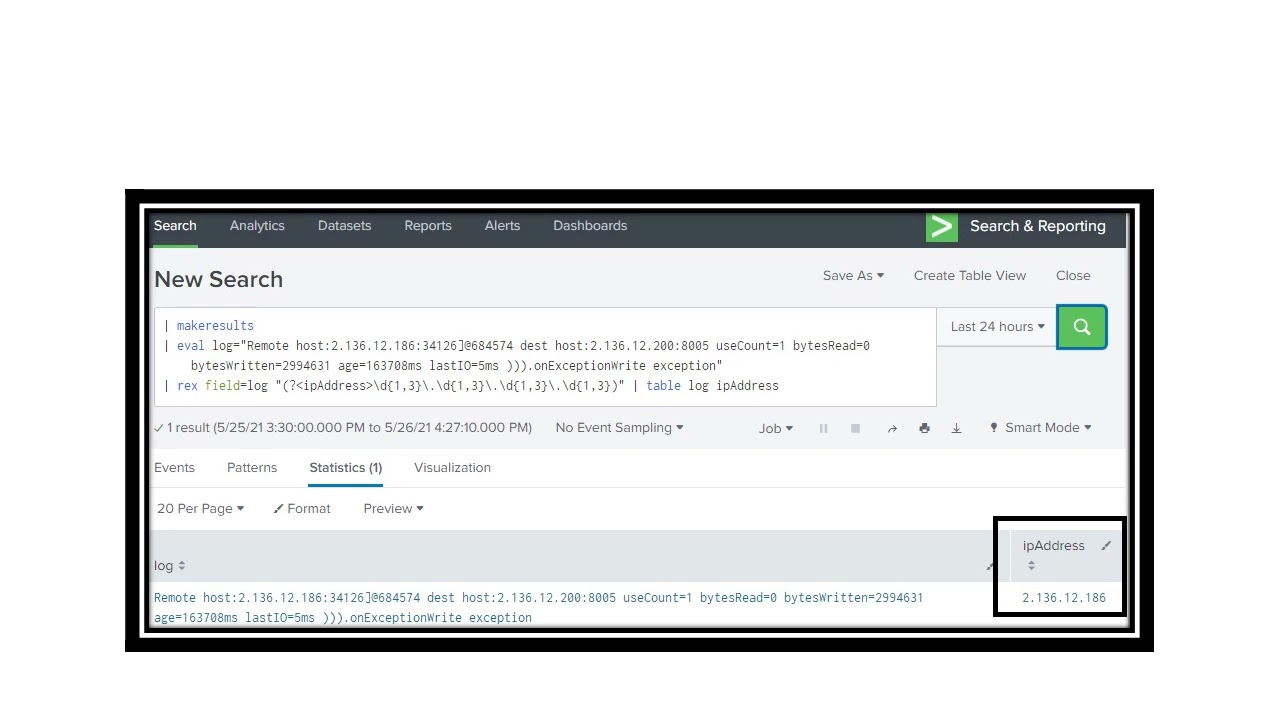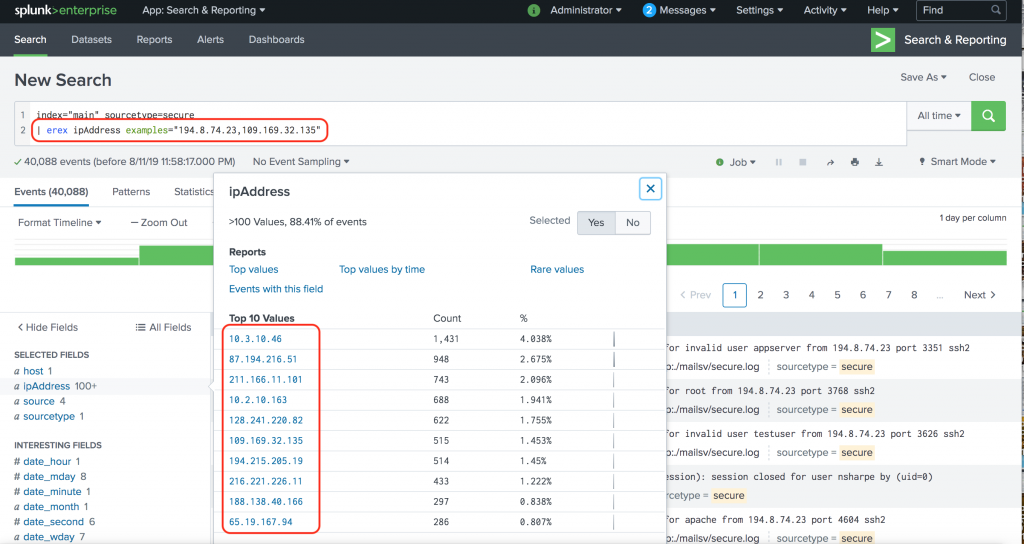

?specifies the name of the field that the captured value will be assigned to. Here is my regular expression to extract the password.
SPLUNK REX PASSWORD
The value immediately after that is the password value that I want to extract for my analysis. The passwd= string is a literal string, and I want to find exactly that pattern every time. I have highlighted a couple of items of interest to work with.
SPLUNK REX CODE
In the code below, I show the value of the form_data field. So how did that happen? How did this new field appear, you ask? Let's break this down. Now we can perform operations on this new field, such as stats, discussed in John Stoner's excellent blog post: " I Need To Do Some Hunting. Cool, huh? Now when I look at the results.lo and behold, I have a new field called “pass”! Notice that we use the rex command against the form_data field and then create a NEW field called pass? The “gibberish” in the middle is our regular expression-or “regex”-that pulls that data from the “form_field”. This will create a “pass” field that you can then search for unencrypted passwords in its value. In this one event you can see an unencrypted password-something you never want to see in your web logs! In order to find out how widespread this unencrypted password leakage is, you’ll need to create a search using the rex command. As you start your analysis, you may start by hunting in wire data for http traffic and come across a field in your web log data called form_data. As a hunter, you’ll want to focus on the extraction capability.Īs an example, you may hypothesize that there are unencrypted passwords being sent across the wire and that you want to identify and extract that information for analysis. The rex command allows you to substitute characters in a field (which is good for anonymization) as well as extracting values and assigning them to a new field. Splunk offers two commands ( rex and regex) in SPL that allow Splunk analysts to utilize regular expressions in order to assign values to new fields or narrow results on the fly as part of their search. However, on occasion, some valuable nuggets of information are not assigned to a field by default and as an analyst, you’ll want to hunt for these treasures. Additionally, Splunk can pull out the most interesting fields for any given data source at search time. With Splunk, all logs are indexed and stored in their complete form (.compared to some *ahem* lesser platforms that only store certain fields).

“But stop,” you say, “Splunk uses fields!” When working with ASCII data and trying to find something buried in a log, it's invaluable. Regular Expression-or "gibberish” to the uninitiated-is a compact language that allows analysts to define a pattern in text. Workflow Actions can only be applied to a single field.This is part eight of the " Hunting with Splunk: The Basics" series. This Workflow Action type sends field values to external resources. What is the proper syntax for using a macro named “us_sales”? This Workflow Action type directs users to a specified URI. What is the proper syntax for using a macro named Us_sales?
This is a generating command that must start with a pipe. If you don’t specify any arguments with it then it runs in the local machine and generate one result with only the _time field. Makeresults command generates the specified number of the search results in the result set. # so, as a beginner, if you are got confusion of which one to use “rex or regex”, normally you would required to use “rex”. # regex is, generally less-required than rex. This regex command prints out the results that match the specified regular expression. What is the difference between Rex and regex in Splunk? Unlike Splunk’s rex and regex commands, erex does not require knowledge of Regex, and instead allows a user to define examples and counterexamples of the data to be matched. What is the difference between the Erex and Rex commands? The field extractor starts you at the at the Select Sample step. In the All Fields dialog box, click Extract new fields.At the top of the fields sidebar, click All Fields.


 0 kommentar(er)
0 kommentar(er)
